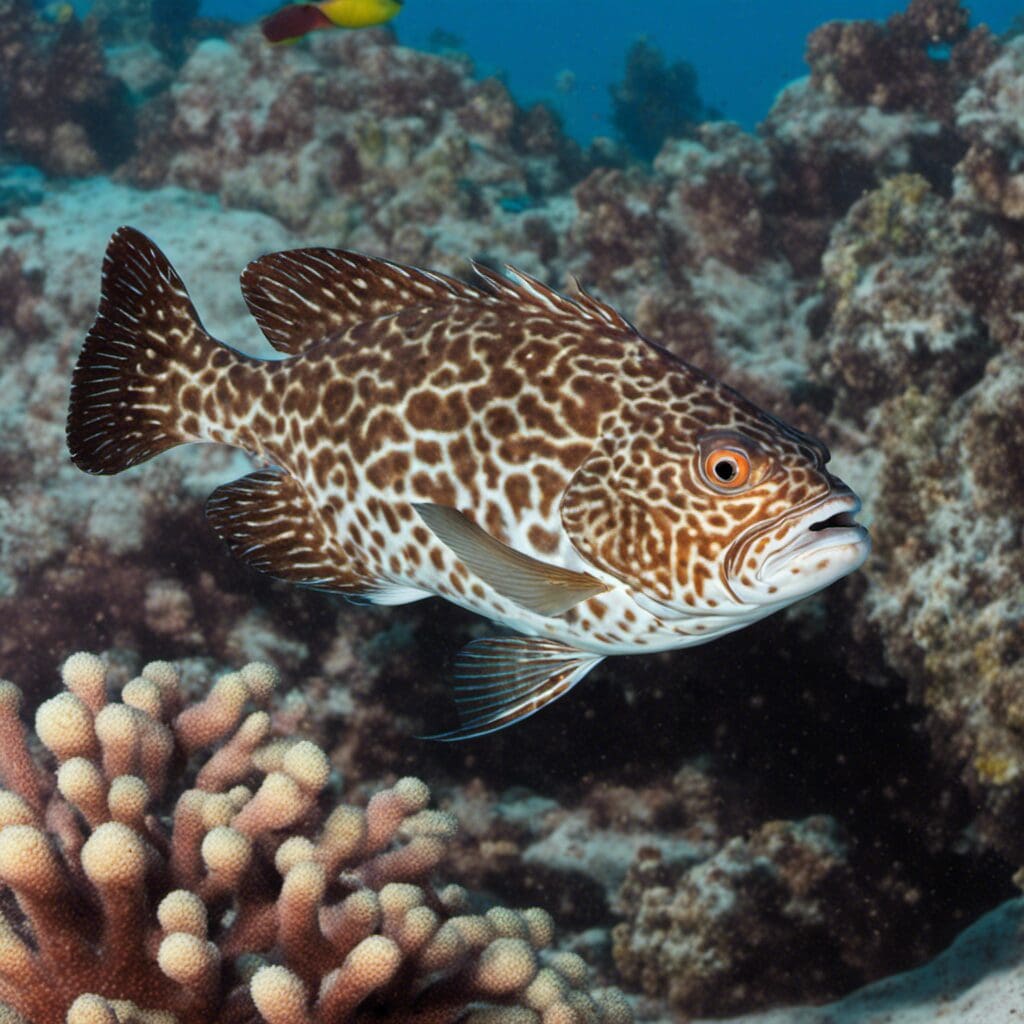Introduction
The Nassau Grouper is a species of fish that belongs to the Serranidae family. Known scientifically as Epinephelus striatus, this species is both an important commercial fish and a crucial part of its ecosystem.
Conservation Status
The Nassau Grouper is currently listed as Endangered on the IUCN Red List. Conservation efforts for the species mainly focus on regulating fishing practices and establishing protected areas.
Statistics
| Length (Average) | 50 cm |
|---|---|
| Length (Range) | 40-100 cm |
| Weight (Average) | 10 kg |
| Weight (Range) | Up to 25 kg |
| Average Lifespan | 16 years |
| Other Stats | Sexual maturity at 5-8 years |
Distribution
The Nassau Grouper can be found in the western Atlantic Ocean, particularly in the coastal waters of Florida (US), the Bahamas, Belize, and Brazil. Its migration patterns are largely dependant on mating season, migrating to specific areas to spawn.
Habitats
These grouper types prefer shallow, tropical waters, with a depth range of 20-30m. They typically dwell around coral reefs and rocky surfaces. Ideally, they prefer a temperature range of 74 – 82 °F (23 – 28°C).
When and Where to See
The Nassau Grouper is more active during the daytime. During the winter months, specifically around full moon periods, large groups of Nassau Groupers converge for spawning.
Best Fishing Locations and Tips
Top fishing locations for Nassau Grouper:
- Florida Keys, US
- Andros Island, Bahamas
- Ambergris Caye, Belize
- Abrolhos, Brazil
For identifying potential habitats, look for rocky surfaces and coral reefs in shallow, tropical waters.
How to Catch
Preferred bait includes small fish like sardines or squid. Techniques include bottom fishing and free-diving with spearguns. The most fruitful times for fishing are daytime hours and during the winter spawning season.
Identification Guide
Nassau Groupers are distinguished by their colour, ranging from tawny to pink with five dark vertical bars. The body shape is typical of groupers, robust and elongated. The species also exhibits a large black saddle on the caudal peduncle and a wide black band on the sides of the head extending from the snout to the eye.
Culinary Profile
Nassau Grouper is a popular fish in many cuisines, baked, fried, or grilled. Its taste is often described as mild and sweet, with a flaky texture. This fish is a good source of protein and contains heart-healthy omega-3 fatty acids.
Additional Information
The Nassau Grouper is a solitary species and a top-level predator. Its diet mainly consists of fish and small crustaceans. Predators include larger fish and humans. As for cultural significance, the Nassau Grouper is a symbol of the Bahamas, featuring on their ten-cent coin.
References and Further Reading
To learn more about the Nassau Grouper, consider these sources:
- Bahamas National Trust
- Florida Museum
- Oceana

